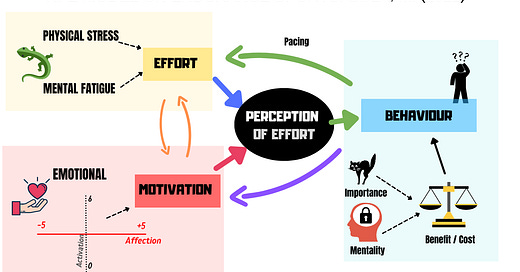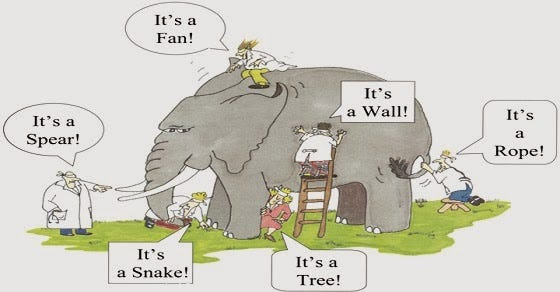This is an excerpt from my book "The Nature of Training."
Legend has it that many years ago in India, there was a temple inhabited by six blind elders. One day, an elephant passed through the temple fields, and that night they discussed what had happened. One of them had bumped into it and said it was a wall. Another touched a tusk and said it was a giant spear. The third, who had touched the trunk, said it was a long snake. The next, who only managed to touch the tail, said it was a huge rope. The fifth, who touched the ear, declared he had touched a large white fan. And the last one, who grabbed a leg, claimed he had touched the trunk of a great tree.
All the wise men were right, and all of them were wrong. This is the same thing that happens when we try to answer what is probably the most important question in Sports Science: Why do we get tired? We need to understand what fatigue is and what causes it in order to delay it.
Fatigue is the elephant in the room. Everyone talks about it, but no one understands it.
In recent history, scientists have looked for the cause of fatigue in thousands of parameters: from lack of oxygen to muscle damage, overheating, lack of energy resources, etc. And the complexity lies in the fact that each and every one of these factors, among others, contributes to fatigue. They are “parts” of the complex system that is the elephant.
But just like the elephant, fatigue has properties that cannot be deduced from studying its parts in isolation. “Why don’t athletes collapse when they reach the finish line at the Olympics?” Tim Noakes asked over 30 years ago. “If fatigue were simply a matter of physical wear and tear, how is it that after the most demanding effort of their lives, they still have energy to celebrate?”
In all athletic events over 800 meters, in the final meters of a time trial or a road race, we observe a final sprint or increase in pace (Tucker, 2009). From a physiological point of view, it makes no sense. The athlete is supposedly going as fast as possible throughout the race, and upon seeing the finish line, suddenly accelerates. If they can sprint, why couldn’t they go faster before?
The article that answered Noakes’s questions came from the Italian researcher Marcora, who conducted a brilliant protocol in which he had 10 athletes pedal to exhaustion in an incremental test, making them compete against each other and motivating them with cash prizes based on their ranking (Marcora, 2010). The trick of the study was that at the exact moment when each subject gave up and said they couldn’t pedal even one more second, they were encouraged to perform a final 5-second sprint with all their strength.
Even though, on average, the athletes produced 242 watts during the exhaustion test, in the sprint they managed to generate an average of 731 watts. The question here is clear: if each athlete declared they couldn’t sustain 242 watts for even one more second… why were they able to sprint at triple that power at that very moment?
Clearly, the athletes had something left in reserve but didn’t use it. Therefore, the limits of fatigue cannot be purely physical; it seems they may be more influenced by the mind than previously thought. And in recent years, this hypothesis has been confirmed.
We have seen how runners hit “the wall” during marathons and slow down even though they still have sufficient glycogen in their muscles; in fact, we almost never reach “zero glycogen” (Venhorst, 2019; Nieman, 2016). Sugary drinks prevent fatigue better than the intravenous infusion of the same amount of glucose (Jeukendrup, 2004), and even just rinsing the mouth with a sugary drink and spitting it out improves performance more than doing so with water (Chambers, 2009).
It seems that one of the physiological limits in the body is the threshold of 40ºC body temperature. In time trials and incremental tests, body temperature at the point of exhaustion usually ranges between 40.0 and 40.3ºC (González-Alonso, 1999). We might therefore expect that as long as the athlete’s body temperature is far from this threshold, performance would not be affected. However, this is not entirely the case. When exercising in hot conditions, the athlete’s perceived exertion is higher from the start, and performance is also lower from the start—even though body temperature is still far from this maximum (Tucker, 2004).
Interestingly, heat is only part of the story when we talk about fatigue. Believing it is less hot also improves performance. Under the same temperature, cyclists perform 4% better when they are misled about the temperature—they are told it is 26ºC instead of 32ºC (Castle, 2012). By the same mechanism, the taste of mint is associated with potential performance improvement in hot conditions, as it reduces the sensation of heat (Jeffries, 2018; Stevens, 2017).
(…)






